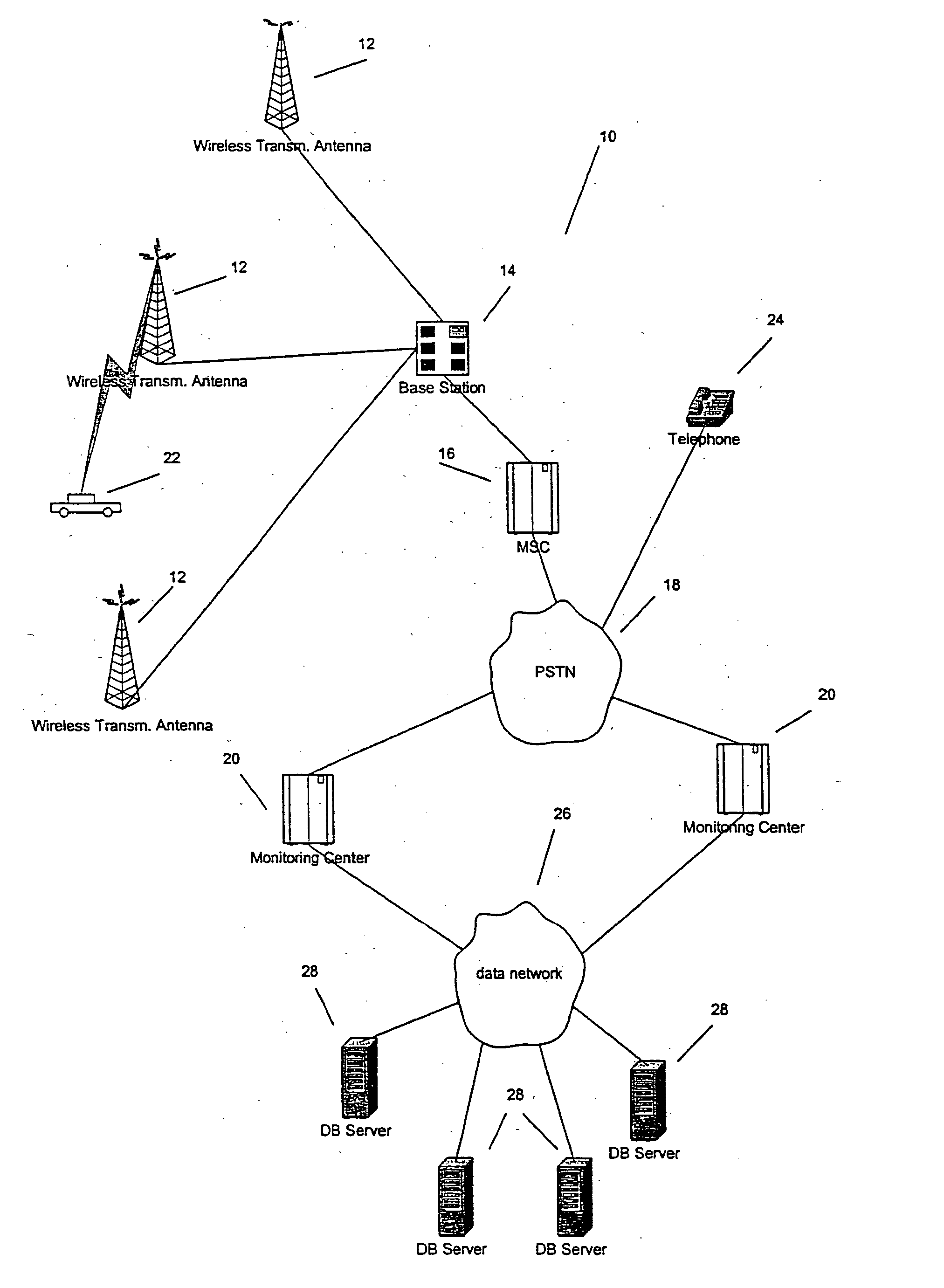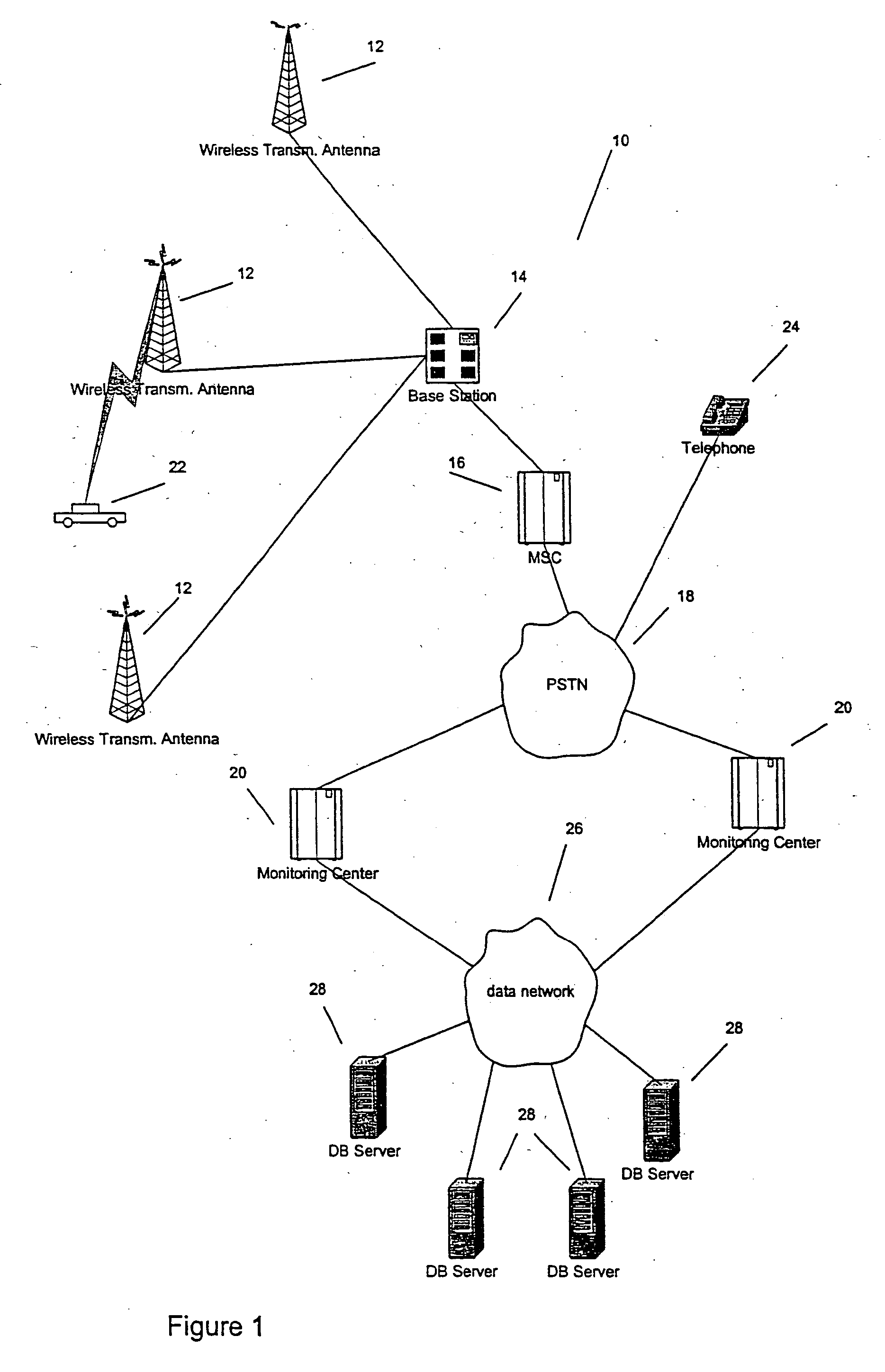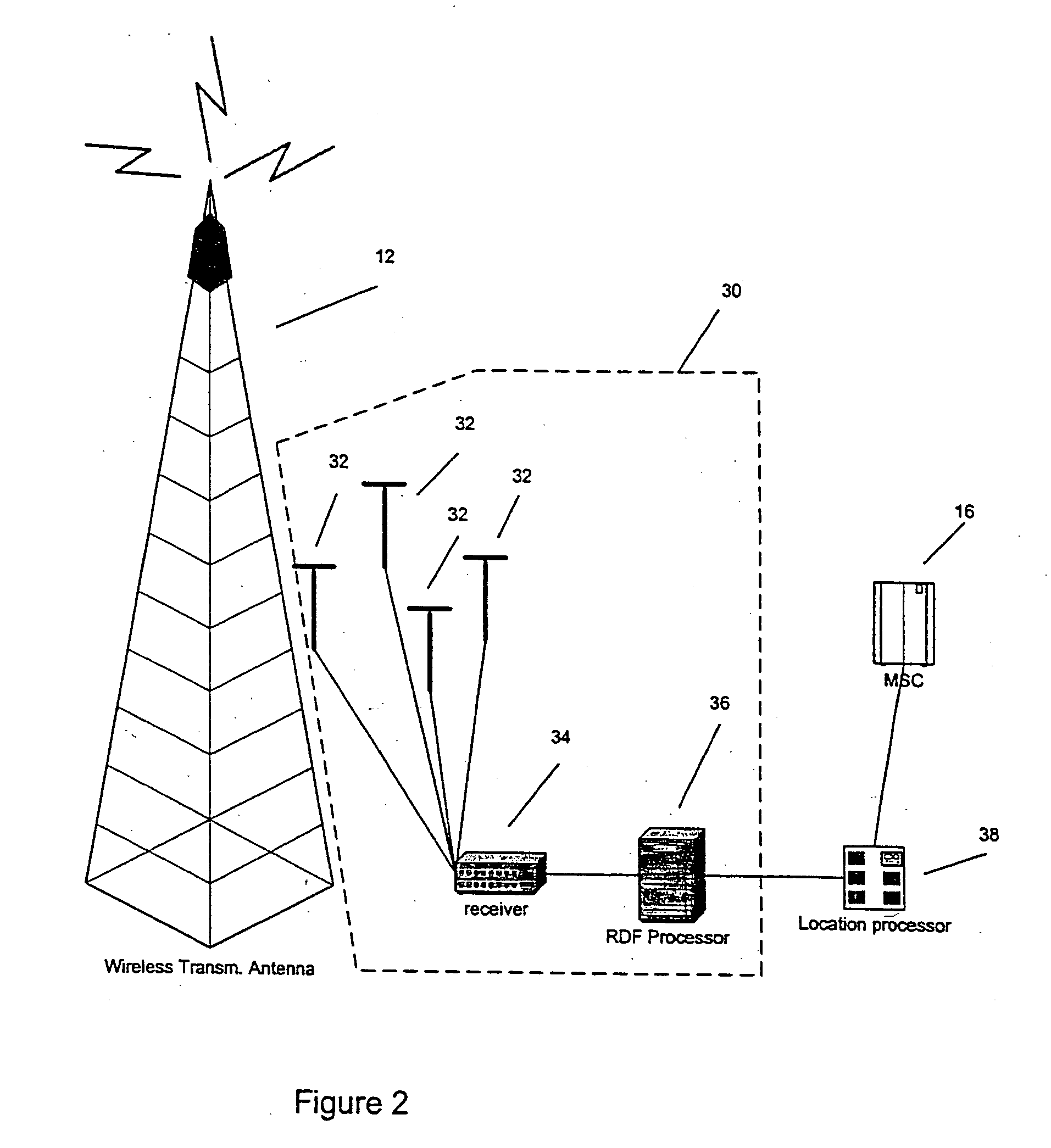Systems and methods for distributed processing of location information associated with emergency 911 wireless transmissions
a wireless transmission and location information technology, applied in the field of radiotelephony and distributed processing of requests from radiotelephones, can solve the problems of unauthorized entry, high cost for most car owners, and not addressing the problem
- Summary
- Abstract
- Description
- Claims
- Application Information
AI Technical Summary
Benefits of technology
Problems solved by technology
Method used
Image
Examples
Embodiment Construction
[0034] Referring now in greater detail to the drawings, in which like numerals represent like components throughout several views, FIG. 1 depicts architecture of a wireless communication network 10 that support the present invention. The wireless communication network 10 has a plurality of communication antennas 12, also known as wireless transmission antennas, connected to a base station (BS) 14. The wireless transmission antennas 12 are distributed geographically to cover a wide area, and each antenna 12 typically covers a “cell.” A BS 14 may support one or more transmission antennas 12 and are in communication with a MSC 16. A MSC 16 may support several BS′14.
[0035] The wireless telephone network 10 may employ different technologies, such as CDMA (code division multiple access), TDMA (time division multiple access), GSM (Global System for Mobile Communications), FDMA (frequency division multiplex access), etc. Each technology may use a different protocol and method for communica...
PUM
 Login to View More
Login to View More Abstract
Description
Claims
Application Information
 Login to View More
Login to View More - R&D
- Intellectual Property
- Life Sciences
- Materials
- Tech Scout
- Unparalleled Data Quality
- Higher Quality Content
- 60% Fewer Hallucinations
Browse by: Latest US Patents, China's latest patents, Technical Efficacy Thesaurus, Application Domain, Technology Topic, Popular Technical Reports.
© 2025 PatSnap. All rights reserved.Legal|Privacy policy|Modern Slavery Act Transparency Statement|Sitemap|About US| Contact US: help@patsnap.com



